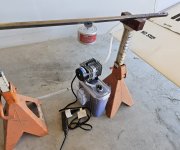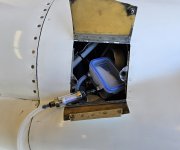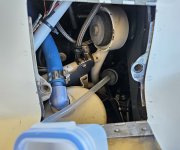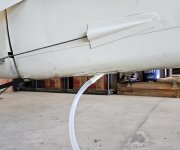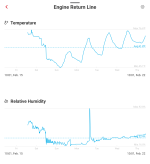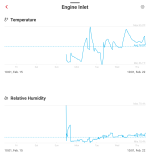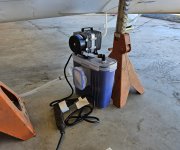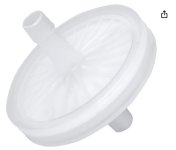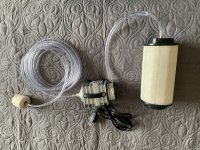Hey guys!
I bought myself a beautiful 1987 RV3 with an O-320 back in November 2020. I had all the intentions in the world of flying regularly and taking it out multiple times a week, etc. Whelp, maintenance and upgrades and life has kept getting in the way, and to date I only have about 50hr on her over the last 3+ years.
I live in Kingsville, TX only 20mi from the coast. I know this is an INCREDIBLY corrosive environment based on rapid rust formation on my hotrod frame when I first moved here. In an attempt to minimize the damage to my engine, I have taken some inspiration from the internet and constructed an engine dehydrator.
It consists of a cereal container filled with desicant beads and ¼" ID silicon tubing. I have wireless hydrometers mounted on the engine inlet side as well as the oil breather return side. O-rings seal every pneumatic connector in and out of all of the containers, plus copious amounts of hot glue as a backup; it should be a closed system (exhaust is sealed, but not the intake).
I have some concerns with constantly running air through my motor and have installed additional descicant bags inside my exhaust, then sealed the off with rubber bungs (not pictured). I'm curious on the community thoughts or ways to improve my setup!
Ps. I quickly set up a fire extinguisher suspended above... Just in case
I bought myself a beautiful 1987 RV3 with an O-320 back in November 2020. I had all the intentions in the world of flying regularly and taking it out multiple times a week, etc. Whelp, maintenance and upgrades and life has kept getting in the way, and to date I only have about 50hr on her over the last 3+ years.
I live in Kingsville, TX only 20mi from the coast. I know this is an INCREDIBLY corrosive environment based on rapid rust formation on my hotrod frame when I first moved here. In an attempt to minimize the damage to my engine, I have taken some inspiration from the internet and constructed an engine dehydrator.
It consists of a cereal container filled with desicant beads and ¼" ID silicon tubing. I have wireless hydrometers mounted on the engine inlet side as well as the oil breather return side. O-rings seal every pneumatic connector in and out of all of the containers, plus copious amounts of hot glue as a backup; it should be a closed system (exhaust is sealed, but not the intake).
I have some concerns with constantly running air through my motor and have installed additional descicant bags inside my exhaust, then sealed the off with rubber bungs (not pictured). I'm curious on the community thoughts or ways to improve my setup!
Ps. I quickly set up a fire extinguisher suspended above... Just in case



